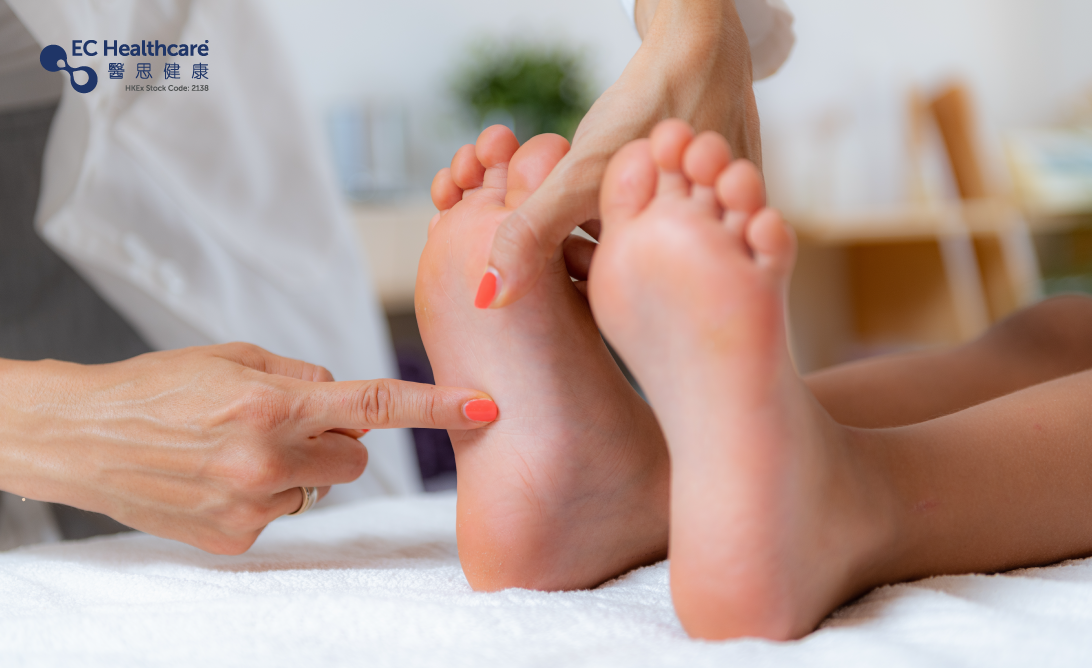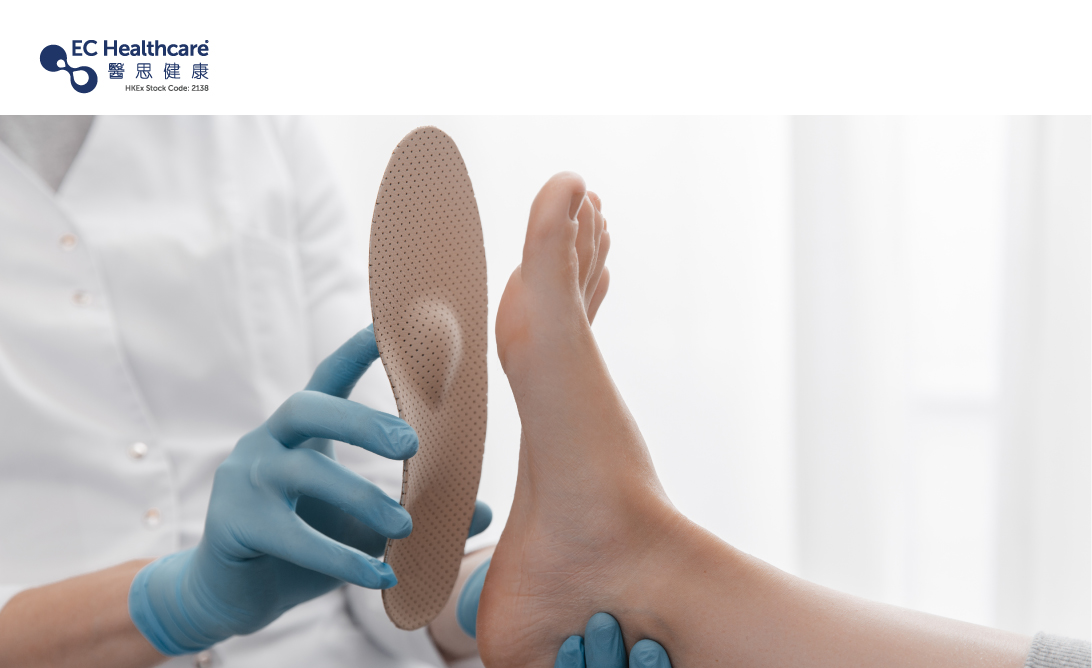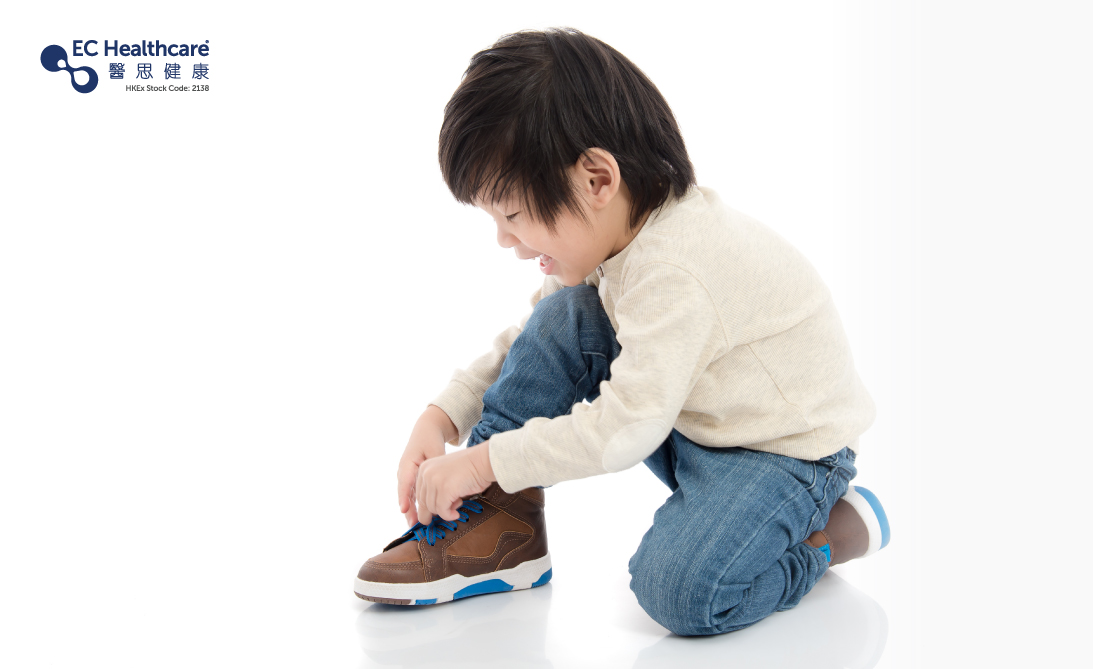Flat Feet in Children: Chiropractor Dr Steve Yun Explains the Treatment Methods


Flat feet are a common foot issue, which can be observed in children as young as 4 to 6 years old. It not only affects the feet but also impacts overall muscle coordination. We have invited chiropractor Dr Steve Yun to introduce the causes and treatment methods for flat feet.
What are flat feet?
To understand the characteristics of flat feet, we need to first learn about the foot arch. When viewed from the inside of both feet, you can see a distinct arch, which is the foot arch. The arch helps absorb shock while walking and prevent excessive pressure on the feet. The commonly heard term “flat feet” refers to a condition where the feet have little to no arch, in other words, individuals with no medial longitudinal arch are referred to as having flat feet.
What are flat feet in children?
In fact, all infants have flat feet, meaning their feet do not have the slightly curved arch commonly seen in adults. It is only around the age of 2 that the medial longitudinal arch gradually begins to grow.
What are the types of flat feet?
Generally, flat feet can be divided into two main types: flexible flat feet (which account for the majority) and rigid flat feet.
Flexible flat feet:
This refers to having a normal foot arch when not bearing weight, but the arch collapses once weight is applied. The causes include:
Normal physiological development: Infants have thicker fatty tissue in the arch, leading to flat feet. Additionally, children aged 4 to 6 may have flat feet due to ligamentous laxity.
Joint laxity: Ligaments supporting the foot arch are overly flexible.
Muscle weakness and lack of coordination.
Rigid flat feet:
This refers to flat feet that occur with or without weight bearing. The causes include: vertical talus, tarsal coalition, foot deformities
Are flat feet common in Hong Kong children?
There are no official statistics on the number of people affected by flat feet in Hong Kong. Yet, in neighbouring regions like Taiwan, around 8,000 out of the average of 200,000 newborns each year have flat feet, accounting for about 4%. This shows that flat feet are not rare in children.
How can I know if my child has flat feet?
If you suspect that your child has flat feet, it is best to consult medical professionals for examinations. But you can also use the following simple methods to check for the signs of flat feet.
I recommend these 4 simple tests:
Observe the wear pattern on the bottom of regularly worn shoes. Generally, the shoes of people with flat feet tend to be more heavily worn on the inside;
Observe if there is a difference between the height of the arch when standing (weight bearing) and sitting (non-weight bearing);
Stand with the feet together and observe from behind whether the vertical axis of the calf and the axis of the heel appear to be in a straight line;
Stand on one foot and raise the big toe. If you cannot perform this movement and have flat arches, you are highly likely to have flat feet.
Parents often buy shoes that are one to two sizes larger for their young children due to concerns about their rapid growth. Does this practice have an impact on flat feet?
If children wear shoes that are too big, there may be excessive space inside the shoes, and children will need to grip the shoes harder while walking, causing fatigued foot muscles. It can also affect children's balance and make them easier to lose balance and fall. If a child has hereditary flat feet, wearing oversized shoes can worsen the condition and cause the child's soles to be more prone to abrasions or calluses.
Do serious flat feet need surgical correction?
Most flat feet patients do not require surgery. When other methods fail to alleviate symptoms and the condition significantly interferes with their daily life, the doctor may consider surgical treatment.
What are the long-term impacts of flat feet on children?
Flat feet do not cause obvious symptoms at the early stages. However, when patients stand or walk excessively, the arches of their feet will collapse, bringing their soles closer to the ground. Their arches cannot effectively absorb shock and support their body weight, leading to compensatory symptoms in the foot joints, knee joints, and hip joints over time. Flat feet can cause these 4 common long-term symptoms:
Sore, painful and numb feet
Poor balance while walking, making the patient more prone to injuries
In-toeing or out-toeing when walking, which may result in knock knees
Other compensatory complications: plantar fasciitis, bunions, knee joint or lumbar spine diseases
How should parents help their children correct their walking posture to prevent or improve flat feet?
Parents can teach their children with flat feet to walk in these ways:
1.Regular check-ups: Schedule regular check-ups to ensure that your child has sufficient support in their feet.
2.Comfortable footwear: Provide your child with comfortable shoes that help them walk naturally.
3.Practice proper posture: Teach your child the correct walking posture and train them to maintain it.
4.Strengthen the foot muscles: Help your child strengthen their foot muscles through appropriate exercises and practices to help them walk properly.
5.Supportive devices: If necessary, provide your child with appropriate supportive devices to aid their walking.
6.Sufficient rest: Ensure that your child gets sufficient rest to avoid fatigue and overuse of their foot.
7.Provide encouragement: Encourage your child to continue their efforts and praise them from time to time to maintain their confidence and motivation.

Related Brands

